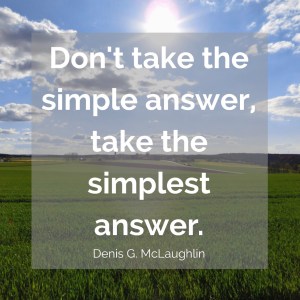When it has to be great.
 There are some areas of your life where it will likely be good enough to be good enough. It’s not that you won’t try to do well, but we can’t possibly be perfect at everything. There are other areas that are so meaningful, so paramount to your dreams, that nothing less than great will be accepted. You have to decide for yourself which of those areas you are operating in, and when you focus on being great, you have to consider the price.
There are some areas of your life where it will likely be good enough to be good enough. It’s not that you won’t try to do well, but we can’t possibly be perfect at everything. There are other areas that are so meaningful, so paramount to your dreams, that nothing less than great will be accepted. You have to decide for yourself which of those areas you are operating in, and when you focus on being great, you have to consider the price.
When you consider the price of greatness, ask yourself if you’re willing to invest to be the best. In the book Grit – The Power of Passion of Perseverance Angela Duckworth discusses her research and findings on the psychology of human accomplishment. In the formula below, Duckworth points out that while “talent” is important, “effort” appears twice in the equation.
“Talent + Effort = Skill. Skill + Effort = Accomplishment.”
It takes twice the effort to move talent to accomplishment. When it has to be great, you must be willing to put in twice the effort that it takes to be good enough.
Take Stock. Before you start on your path to great, you should understand what it will take and gear yourself up for the task. Research others who have achieved great results and look for common attributes. If possible, focus your view specifically on those in the area you aspire to succeed. Take stock in the price of success and determine that you will pay that price.
“I know the price of success: dedication hard work, and an unremitting devotion to the things you want to see happen.”- Frank Lloyd Wright
Take Action. Start. You will never reach the finish line if you don’t get moving. You know the price. Now set your plan in motion. Achieve the first goal, pay the first price. Each time you do you will be energized to keep going. Take action.
“The price of inaction is far greater than the cost of making a mistake.” – Meister Eckhart
Take Heart. Greatness. It’s hard to explain but once experienced it’s harder to not want more. Once you exert that extra effort it takes to be better than good enough you will reap the rewards of being great. Then the price of success becomes something enjoyable to pay. Take heart, the process becomes its own reward.
“You do not pay the prices of success, you enjoy the price of success.” – Zig Ziglar



